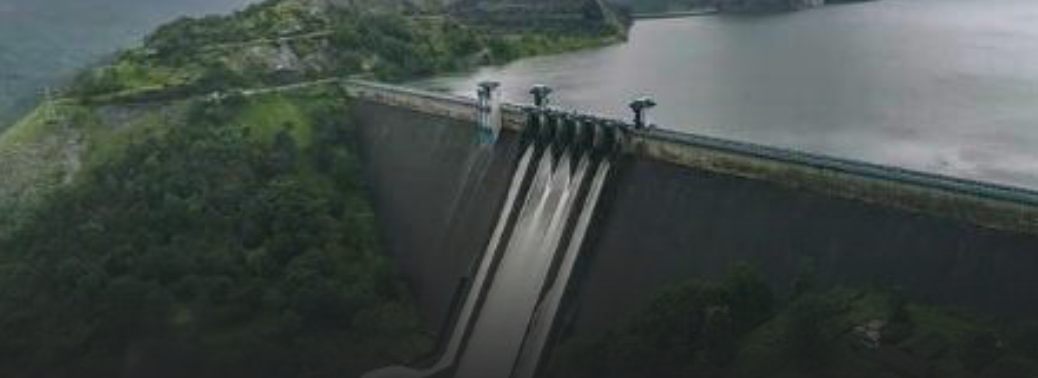SUDDEN RELEASE OF WATER FROM DAMS WORSENED KERALA FLOODS
04, Apr 2019

Why in News?
- The sudden release of water simultaneously from different reservoirs during heavy rain had aggravated the damage during the floods in last year says Kerala high court.
Background:
- According to official reports mismanagement of dams was the primary reason for the Kerala floods.
- One of the major functions of dams is flood protection to attenuate the flow of water and its impact downstream.
- The golden rule followed in dam management is to
- maintain a flood cushion (buffer) in case of unexpectedly high rainfall.
Dams in Kerala:
- Kerala has 39 major dams; their maintenance is shared between the Kerala State Electricity Board (KSEB) and the Water Resources Department.
- The Periyar is the longest river in Kerala and has the highest discharge potential.
- The major dams across this river that are maintained by the KSEB are Idukki, Lower Periyar, and Madupetty.
- The water from Lower Periyar, Madupetty and Mullaperiyar drains into the Idukki reservoir consisting of the Idukki dam and the Cheruthoni dam.
- The water from the Idukki reservoir and Idamalayar drains directly into the Bhoothathankettu dam, which is the lowermost in the Periyar system, just 15 km from Kothamangalam town.
Reasons behind the flood:
- OVER POPULATION:
Kerala ranks 3rd in India’s most densely populated states. With a population density of 860/sq km, it’s even double of average population density of India.
So, when flood comes in such a packed state, destruction is meant to be happen.
- DEFORESTRATION:
In early 1900 the Green cover of Kerala was 8 Lakh hectares. It was enough to absorb even 3000 mm of rainfall. But due to rapid development after independence the Green cover in Kerala is now just 1 Lakh hectare.
The water absorption capacity of land has decreased to great extent which caused water stagnation and ultimately destruction.
- CHANGING FLOW OF RIVERS:
Kerala is a state of rivers. It proudly stands at 3rd rank in states that have maximum number of rivers. Nature had purposely kept the flow of rivers into Arabian Sea which the humans couldn’t understand. We decided to change the flow of rivers just for our benefit.
- DAM MISMANAGEMENT
There is a total of 42 Dams in Kerala out of which 12 are in Idukki and 11 are in Palakkad. The state was forced to throw open the gates of 35 out of 42 dams knowing full-well what was to come. Now the you must have heard that all the 5 gates of Idukki (cheruthoni dam) were opened. Here the dam authorities are being criticized that why they didn’t released water in small amounts and kept waiting till the water came to danger mark.
The water which was released in abrupt manner also played a role in destruction.
What measures are needed to address such calamities?
- A flood code having ready-to-use contingency plans to cope with inundation, on the lines of the existing drought code, is badly needed for all flood-prone areas.
- Floods, indeed, seem to have become an integral feature of the monsoon season, thus proper flood-proofing effort need to be the part of government’s protocol.
- While in other countries dams and barrages are built to ward off floods, in India, they tend to serve the opposite purpose because of unprofessional management of the impounded waters. This has necessitated substantial enhancement in the efficiency and reliability of the weather- and flood-forecasting systems to forewarn civic administrations of impending disasters for timely relief action.
National Disaster Management authority:
- The NDMA is apex statutory body for disaster management in India
- It is under control of Ministry of Home Affairs (MHA).
- Its provisions are envisaged in Disaster Management Act, 2005
- It was established in 2009, It is headed by the Prime Minister of
- Mandate: Its primary purpose is to coordinate response to natural or man-made disasters and for capacity-building in disaster resiliency and crisis It is also apex body to lay down policies, plans and guidelines for Disaster Management to ensure timely and effective response to disasters.
Functions and Responsibilities of NDMA:
- Approve the National Disaster Plan. Lay down policies on disaster management.
- Approve plans prepared by Ministries or Departments of Central Government in accordance with National Plan. Lay down guidelines to be followed by State Authorities in drawing up State Plan. Lay down guidelines to be followed by different Ministries or Departments of Central Government for purpose of integrating measures for disaster prevention or mitigation of its effects in their development plans and projects.
- Coordinate enforcement and implementation of disaster management policy and plan. Recommend provision of funds for the purpose of mitigation.
- Provide such support to other countries affected by major disasters as determined by Central Government; Take such other measures for prevention of disaster or mitigation or preparedness and capacity building for dealing with threatening disaster situation or disaster as it may consider necessary. Lay down broad policies and guidelines for the functioning of National Institute of Disaster Management.






